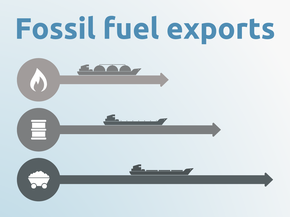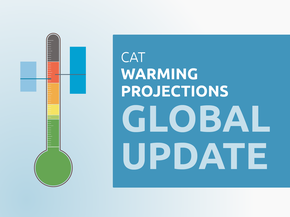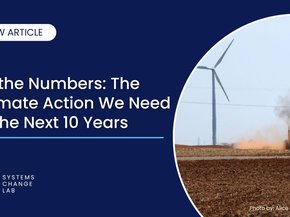Current Policy Projections
Economy-wide
Nepal’s contribution to global GHG emissions is negligible, with only 35 MtCO2e emitted in 2010—less than 0.1% of global emissions. From 1990 to 2010, Nepal’s GHG emissions excluding LULUCF have increased by 2.1% per year on average. With current policies, this emissions growth is projected to slightly increase to 2.7–3.3% per year, on average, in the period 2010–2030, reaching 54–58 MtCO2e in 2030. With this slightly increased growth, per capita emissions will still be very low at around 1.6–1.8 tCO2e per capita by 2030.
Nepal is a least developed country that is highly vulnerable to climate change. Particular vulnerabilities include rapidly melting glaciers, resulting in the danger of glacial lake outbursts and degradation of agricultural land, on which two thirds of the population base their livelihoods (Government of Nepal, 2014). Therefore, Nepal has focused its climate change action on adaptation. Nepal has developed nine National Adaptation Programmes of Action (NAPAs). These NAPAs focus mainly on the agricultural sector, water resources and disaster risk management (UNFCCC, 2013). For Nepal to be able to implement these NAPAs, replenishment of the Least Developed Countries Fund (LDCF) is needed (UNFCCC, 2014).
In early 2010, Nepal established the Climate Change Management division in the Ministry of Environment. The main policy related to emissions mitigation is the Climate Change Policy 2011, the central goal of which is ‘to improve livelihoods by mitigating and adapting to the adverse effects of climate change, adopting a low-carbon emissions socio-economic development path and supporting and collaborating in the spirits of country’s commitments to national and international agreements related to climate change’ [sic] (Government of Nepal, 2011).
Energy supply
Energy-related CO2 emissions contributed only 29% to Nepal’s total emissions in 2010, but this share is projected to increase to between 36–40% by 2030. As of 2016, about 91% of the population has access to electricity (World Bank Group, 2018) and this share is expected to increase to 100% by 2030 (Shrestha & Shakya, 2012). The Nepali energy mix is dominated by hydropower. It accounts for nearly 90% of installed capacity and 95% of total generation of energy (Government of Nepal, 2014).
To meet the growing energy demand, the Government recently unveiled a “white paper” on Nepal’s energy sector with the primary target of generating 15,000 MW of electricity in the next one decade (Government of Nepal, 2018b). On top of this, the government is set to mark the years 2018–2028 as the Energy Decade: “emphasis will be given to the development and expansion of hydroelectricity and all types of renewable energy to provide clean energy to all Nepali households within the coming three years and to avail electricity to all households per demand within the next five years” (Government of Nepal, 2018a). Next to the developments on national level, targets around the installation of renewable energy capacity are set on sub-national, provincial, level.
Transport
As a landlocked country, road transport accounts for over 90% of the domestic movement of passengers and freight in Nepal. Because of rapid urbanisation, rising incomes and increased road access in rural areas, the total number of registered vehicles increased significantly, as did GHG emissions levels. Transport-related GHG emissions grew by 22% per year over the period 2007 till 2013.
Under the overall direction of the Government of Nepal, the Global Green Growth Institute (GGGI) developed a National Action Plan for Electric Mobility which supports the implementation of Nepal’s NDC targets for the transport sector. It does this by “reviewing Nepal’s NDC and related policy (Part 1); exploring the transport sector and most effective policy options for increased adoption of electric vehicles (Part 2); identifying a wide range of barriers and issues that are currently restricting adoption of electric vehicles (Part 3); and outlining key proposed actions and initiatives for overcoming these barriers (Part 4)” (GGGI, 2018). Additionally, specific plans to ban fossil-fuelled vehicles in cities such as Kathmandu, Chitwan, Hetauda, Banepa, Dhulikhel and Panauti have been announced on sub-national, provincial, level. According to the announcement, the sale and distribution of fossil-fuelled vehicles will not be allowed after 2028. The plans encourage city dwellers to switch to electric vehicles as their means of transportation (Onlinekhabar, 2018).
Agriculture
The majority of emissions in Nepal are non-CO2 GHG emissions from the agriculture sector. Methane and nitrous oxide contributed 67% of total GHG emissions in 2010, arising from rice cultivation, enteric fermentation and agricultural soils (Government of Nepal, 2014).
Forestry
Nepal has a high deforestation rate due to drivers such as illegal harvesting, overgrazing, forest fires, and a high dependency on forests. There is a strong interest in Reducing Emissions from Deforestation and Forest Degradation (REDD+) and a number or REDD+ readiness projects are being implemented. However, some authors have pointed out that the implementation of REDD+ projects is challenging in Nepal, because of weak governance and high opportunity costs for avoided agricultural expansion (Piu & Menton, 2014).
In July 2016, the Nepal’s Ministry of Forests and Soil Conservation published its Forestry Sector Strategy (2016–2015), which aims to enhance forest carbon stocks and reduce deforestation (Government of Nepal, 2016a). Concrete goals mentioned for 2025 include an increase in the forest carbon stock by 5% and a reduction of the mean annual deforestation rate from 0.44% and 0.18% to 0.05% in Nepal’s largest forests, Tarai and Chure, respectively. Additionally, the Strategy envisages the operation of a forest carbon trade or payment mechanism, which could facilitate the protection of Nepali forests.
Historic emissions from LULUFC show a switch from being a net source in 1994 to being a net sink in 2000. This switch is caused by an increased carbon accumulation by forests and other biomass stocks combined with reduced emissions from forest and grassland conversion (UNFCCC, 2018).
Further analysis
Latest publications
Stay informed
Subscribe to our newsletter






